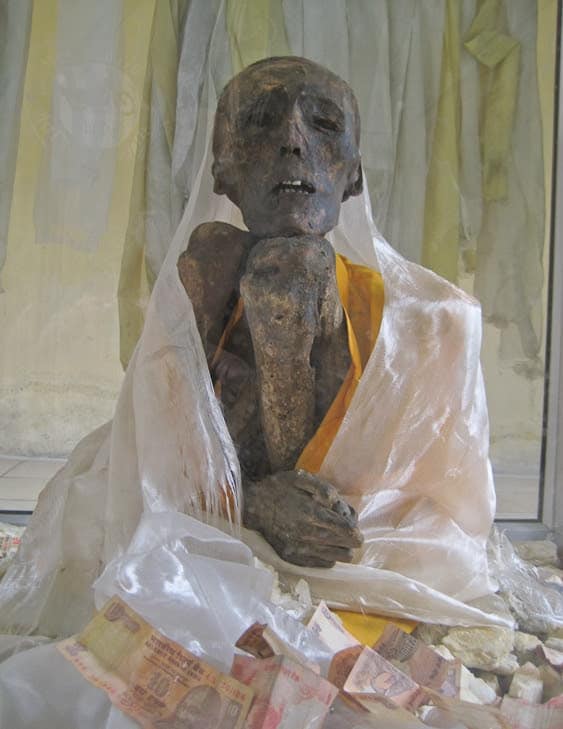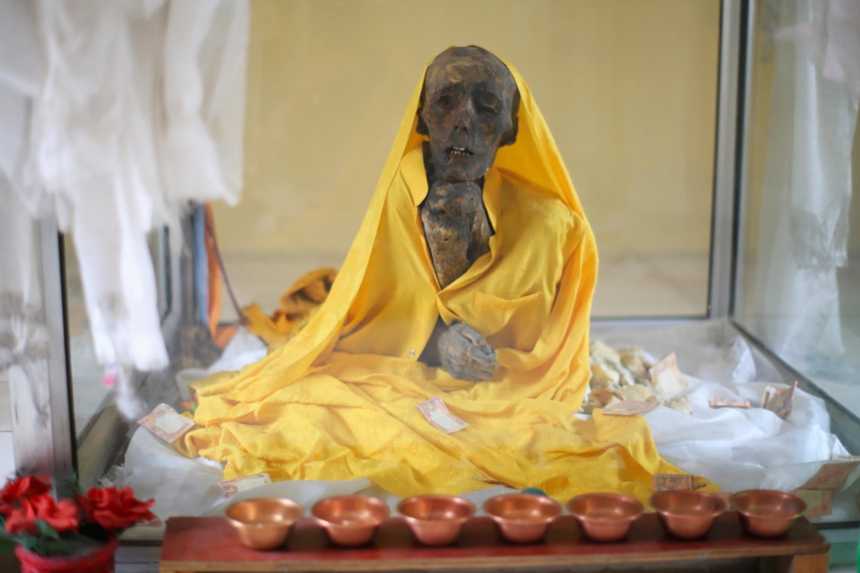Buddhist monk remarkably preserved because he started the mummification process while still living.

Natural Mummification is very rare, requiring conditions of extreme temperature and dry air to preserve the body. Most mummies that we’ve seen (in textbooks and museums) were mummified with a chemical process called embalming and then wrapped in linen.

Buddhist monks of Japan and Tibet have a unique method of mummification. When the monk is alive, he begins a slow process of starvation and ceases to eat barley, rice, and beans, which add fat to the body. Also, in preparation for death, he rubs camphor oil on his skin, drying it out. The monk dies of starvation in a seated posture. Fast putrefaction after death, and by removing the body of fat, the monk can better preserve. Following his death, he is then placed in an underground room for three years, to complete drying out before being brought out for public display. Less than thirty of these monks have been found around the world, most notably in the maoist island of Japan, Honshu.

In 1975, an earthquake in northern India opened an old tomb containing the mummified body of monk Sangha Tenzin. In 2004, the local police excavated the tomb and removed the mummy. The mummy is remarkably well-preserved, with skin intact and hair on his head. He died in the seated posture, with a rope around the neck (an esoteric practice recorded in few Buddhist documents). Local lore claims that he asked his followers to mummify him during a scriptural research in the tomb, and when his spirit left his body, a rainbow appeared and the scriptures disappeared. The tomb is about 30 miles from the Tabo Monastery that dates back to 996 CE.

The mummy of Sangha Tenzin is now on display in a temple in Gue, two miles from where he was excavated in the Himachal Pradesh region of India, bordering Tibet. Controlled by the Indo-Tibetan Border Police and isolated in the Himalayas, the temple where the mummy rests is open to the public, if you can get there.